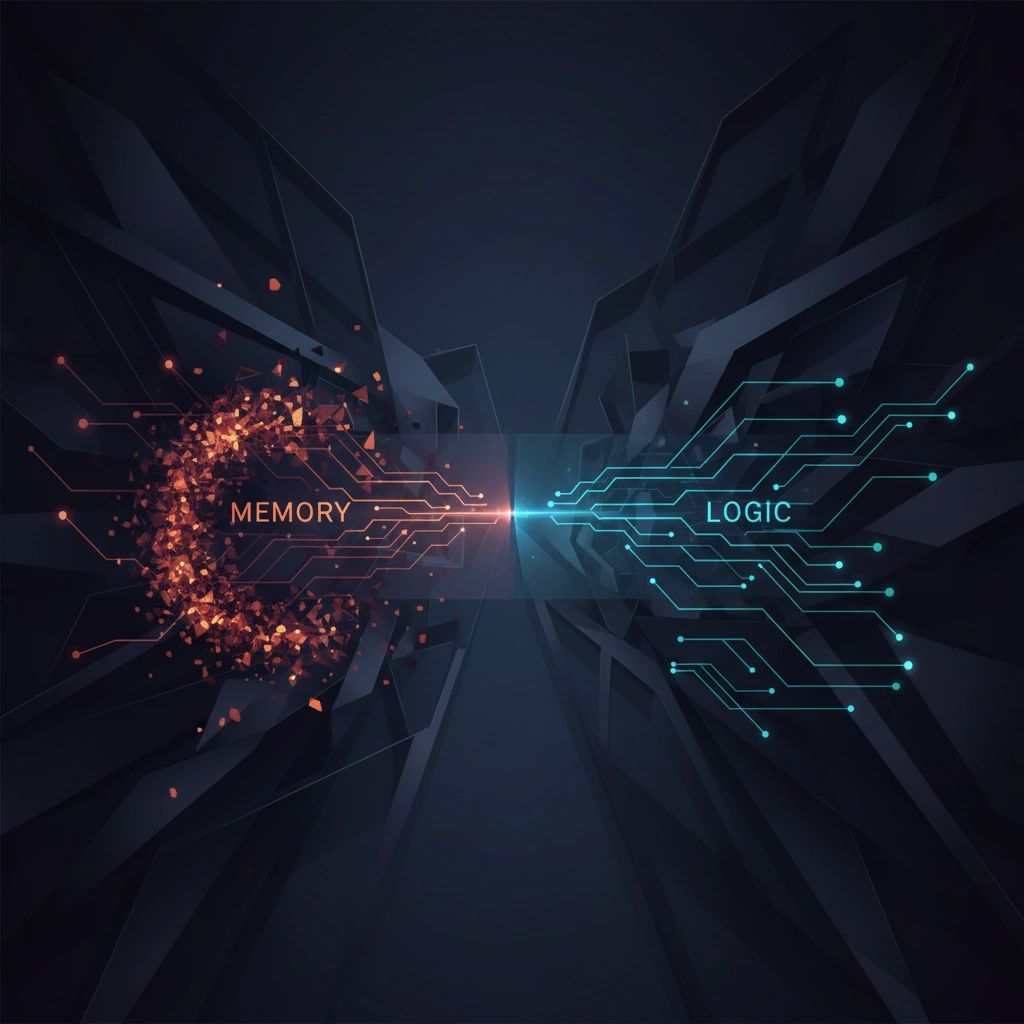Neural Networks Store Memory and Logic Separately
New research reveals AI models compartmentalize memorization and reasoning in distinct neural regions, offering insights into how large language models balance factual recall with logical inference—critical for synthetic media generation.

A groundbreaking study has revealed that artificial intelligence models don't treat all information equally—they actually store memories and logical reasoning capabilities in different regions of their neural networks. This discovery provides crucial insights into how large language models process information and could have significant implications for improving AI systems, including those used in synthetic media generation.
The Memorization-Reasoning Divide
Researchers have identified that neural networks naturally develop a functional separation between storing factual information (memorization) and performing logical operations (reasoning). This architectural distinction emerges during training without explicit programming, suggesting that AI models self-organize their internal structures to handle different cognitive tasks.
The study demonstrates that specific layers and attention heads within transformer architectures specialize in either retrieving memorized facts or executing reasoning processes. Early and middle layers tend to focus on pattern recognition and factual recall, while later layers concentrate on higher-order reasoning and inference tasks.
Technical Implications for Model Architecture
Understanding this separation has profound implications for AI development. By identifying which neural pathways handle memorization versus reasoning, researchers can potentially optimize model architectures for specific tasks. For instance, models designed for factual question-answering might benefit from enhanced memorization pathways, while those intended for complex problem-solving could prioritize reasoning circuits.
The research employed advanced interpretability techniques, including activation analysis and attention mapping, to trace information flow through neural networks. These methods revealed that memorized information creates distinct activation patterns compared to reasoning operations, allowing researchers to visualize the functional division within the model's architecture.
Relevance to Synthetic Media Generation
This discovery has particular significance for AI-generated content and synthetic media. Video generation models, deepfake systems, and other creative AI tools rely on both memorization (recalling visual patterns, faces, objects) and reasoning (understanding spatial relationships, temporal consistency, and realistic motion). The ability to isolate and optimize these capabilities separately could lead to more sophisticated and controllable synthetic media systems.
For deepfake detection, understanding how models separate memorization from reasoning could inform new detection strategies. If synthetic media generators rely too heavily on memorized patterns rather than logical scene construction, this imbalance might create detectable signatures. Conversely, detection systems could be optimized by ensuring their reasoning pathways are sufficiently developed to identify logical inconsistencies in fabricated content.
Addressing Hallucination and Accuracy
One of the most pressing challenges in AI systems is hallucination—when models generate plausible-sounding but factually incorrect information. This research suggests that hallucinations may result from an imbalance between memorization and reasoning pathways. If a model's reasoning circuits override its memorization systems incorrectly, it might generate confident but false outputs.
By understanding where memorization and reasoning occur within neural architectures, developers could potentially implement safeguards. For example, systems could cross-reference reasoning outputs against memorized facts, or flag instances where reasoning circuits generate conclusions that contradict stored information.
Future Research Directions
This discovery opens numerous research avenues. Scientists can now investigate whether enhancing specific neural regions improves model performance on targeted tasks. Additionally, the findings raise questions about whether this memorization-reasoning separation mirrors biological neural organization, potentially offering insights into human cognition.
For the synthetic media industry, these insights could enable more controllable generation systems where creators can adjust the balance between faithful reproduction of training data and creative extrapolation. This granular control would be valuable for applications ranging from film production to educational content creation, where different use cases require different balances of accuracy and creativity.
As AI systems become more complex and are deployed in increasingly critical applications, understanding their internal organization becomes essential. This research represents a significant step toward demystifying the "black box" of neural networks, providing developers with the knowledge needed to build more transparent, reliable, and capable AI systems.
Stay informed on AI video and digital authenticity. Follow Skrew AI News.



